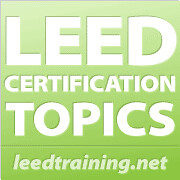It wasn't developed so that engineers, interior designers, architects, construction managers and other professionals will have a extended checklist to ensure and go by to gain well-regarded esteem and classifying, neither was it started as a means for these professionals to gain more developments to work out, nor was it set up to influence people to spend more on changing their on hand existent constructions or spend on modern materials that are now being endorsed to the market.
A Good LEED
Although if you look at it at some direction it could look that way, but all those are actually just a reply to a movement that was started to uphold environmental appreciation and to find ways to guarantee environmental sustainability for forthcoming generations.
LEED® Certification was started by the USGBC as a evaluating approach to grade the ecological performance of a building or estate and to encourage and rush wide-reaching change of developing green or change on hand existent constructions to meet superior environmental standards that will play a role in ecological sustainability and lessen global impact on the atmosphere.
Here are some of the general benefits of getting your homes or office structures LEED certified:
- Responsible consumption of Materials and Supplies – building green demands that your building must have a system of putting together and saving of recyclables, encourages re-use of building walls, floors and roof, recycle or re-use of at least 50 percent of construction waste, use of at least 10 percent provincial materials or supplies that are sourced and manufactured within the local area, use of recycled materials in at least 10 percent of the building (e.g. insulation, steel framing and carpet tiles with high recycled content) and use of rapidly renewable materials and certified wood. These go with a certain point, some depending on the percentage used or applied that would contribute to which type of LEED certification your building or structure will gain.
- Water Efficiency – getting your office or home LEED® Certified will also take a look at how water is being consumed in your building. There should be a water-efficient placement of bathroom and other water-using areas, use of low-flow toilets or automatic faucet controls, ingenious waste-water use techniques that would contribute to at least 20 percent cutback in water use.
This could earn an achievement and will also contribute points to obtaining your LEED certification. - Energy Conservation – to earn points to get your building LEED certified also requires the least energy performance and optimization of energy used. There are a lot of ways as to how this can be accomplished: by using standard HVAC products, building or designing a system that will reduce the amount of energy needed for indoor lighting, placing heating and cooling systems advantageously, providing sensors, making use of air-distribution systems, designing good roof insulation and many others.
- Indoor Environmental Quality and Ecological Sustainability – green building also looks at your indoor air quality performance and environmental tobacco smoke control. This will require improved airing, indoor and outdoor air quality observing and management, acquire a system to decrease entry of impurities, provide methods to manipulate thermal comfort, visual comfort and site improvement, stormwater design, etc.
- Allows for Modernization and Creativity – earning a certification for LEED will also get you points for Originality and Design process. Here is where resourcefulness can benefit you in terms of contributing to the protection and maximization of the use of energy and material resources. There are lots of already LEED® certified buildings that have creative and inspiring techniques of manipulating a certain energy or resource and redirecting its waste into other uses to help maximize its worth and save up on energy usage.

LEED® Certification
